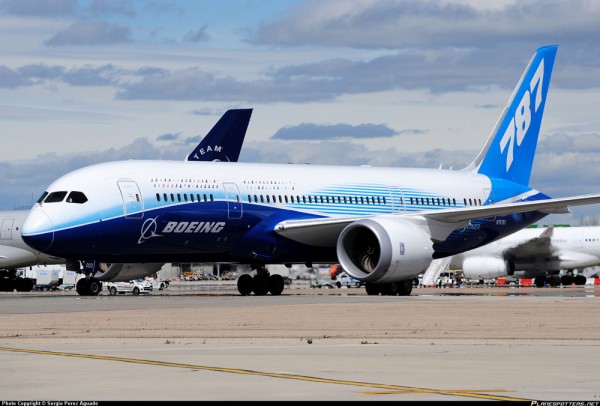Boeing Co. is uprooting the 787 Dreamliner program from a storied manufacturing hub north of Seattle and shifting the work to a non-union plant in South Carolina amid slumping sales of wide-body jetliners.
Production of the marquee twin-aisle jetliner will be consolidated in North Charleston in mid-2021 by the company’s best estimate, Boeing said in a statement Thursday. The planemaker didn’t disclose how many jobs it intended to cut, saying it is still assessing the potential impact on its factory complex in Everett, Washington, where it employs about 30,000 people.

“It became clear that consolidating to a single 787 production location in South Carolina will make us more competitive and efficient, better positioning Boeing to weather these challenging times and win new business,” Stan Deal, head of Boeing’s commercial airplane division, said in a message to employees.
In making the decision, Boeing weighed logistics, efficiency and the “long-term health of our production system,” among other considerations, Deal said. The coronavirus pandemic has devastated the company’s sales outlook by sapping demand for flights, especially on the international routes plied by wide-body jets such as the Dreamliner.
Boeing rose 1.6% to $167.86 at the close of trading in New York. The shares have tumbled 48% this year, the biggest decline on the Dow Jones Industrial Average.
Controversial Plant
Boeing’s 787-only factory in North Charleston has been controversial since inception more than a decade ago, when senior leaders including then-Chief Executive Officer Jim McNerney were chafing at a lengthy Machinists union strike that hobbled manufacturing around Seattle.
Quality issues at the plant drew the attention of U.S. regulators, and came to the fore again in recent weeks as Boeing was forced to ground eight Dreamliners because of potentially dangerous structural weakness.
About 1,000 mechanics and electricians assemble Dreamliners in Everett. Boeing also employs manufacturing and industrial engineers who provide daily support on the factory floor, and design engineers who configure airplanes to each customer’s specifications.
It’s not clear how many engineers might lose their jobs. Many of them support multiple airplane programs and Boeing’s Work Life computer system has been bedeviled by glitches as the company carries out large-scale layoffs, said SPEEA, an engineering union with 17,600 members.
“We believe Boeing is making a mistake,” said SPEEA Executive Director Ray Goforth.
Jon Holden, president of the machinists’ union local that represents touch labor at the factory, called the move “just another in a string of bad decisions Boeing has made that fails to capitalize on the strengths of our workforce.”
Costly Overhead
Boeing said it will keep building 787s in Washington until it lowers output to a six-airplane monthly rate sometime next year. But by spreading Everett’s costs over a smaller production base by mid-2021, the company risks creating a financial drag that lowers the profits of the remaining wide-body programs and its mainstay commercial business.
Longer term, Boeing could look to put its next new jetliner into Everett, whether that’s a narrow-body or mid-sized wide-body, said Robert Spingarn, an analyst at Credit Suisse Group AG.
He said the 787 is unlikely to return to its original home in Everett, even though the North Charleston facility only has the capacity to manufacture seven jets a month—half of Boeing’s total Dreamliner output at the start of the year. If demand for wide-body jets ever rebounds enough to near pre-pandemic levels, the company would probably build a second assembly line in South Carolina, Spingarn said.
“I don’t think this relocation is an optimal outcome. This is not something they would’ve done otherwise,” Spingarn said. “This is reactive. It’s necessary. They fortunately have the benefit of multiple locations to do this, but they’re looking at excess capacity.”
Angry Governor
The shift to South Carolina had been widely expected, given Boeing’s investment in a brand-new campus, after executives revealed in July that they were studying consolidation of Dreamliner production in a single site. Even so, the decision was panned by Washington Governor Jay Inslee before Boeing officially announced it.
The move would jeopardize about 1,000 jobs, Inslee said in a statement Wednesday, and would force the state to take a “hard look” at the company’s favorable tax treatment. “We have asked the Boeing Company multiple times what it needs to keep 787 production in Washington,” Inslee said.
“This move would signal an allegiance to short-term profits and Wall Street—not quality, safety and a vision for the future of the industry,” he said.
Cash Burn
Boeing Chief Executive Officer Dave Calhoun and Chief Financial Officer Greg Smith said in July that the company was reviewing its operations, overhead and facilities and focusing spending on critical areas as it faces a market that’s likely to remain depressed for years.
Even before the pandemic, Chicago-based Boeing was embroiled in crisis and scandal because of two deadly crashes of its best-selling 737 Max jet, which has been grounded since March 2019. Boeing could see a staggering $23.3 billion cash outflow this year, according to Melius Research analyst Carter Copeland, before the resumption of Max deliveries starts to fill the company’s coffers in 2021.
“We have made long-term strategic and sometimes difficult decisions to ensure we bridge to a recovery, and build a stronger, more sustainable future for all of us,” Deal said.










